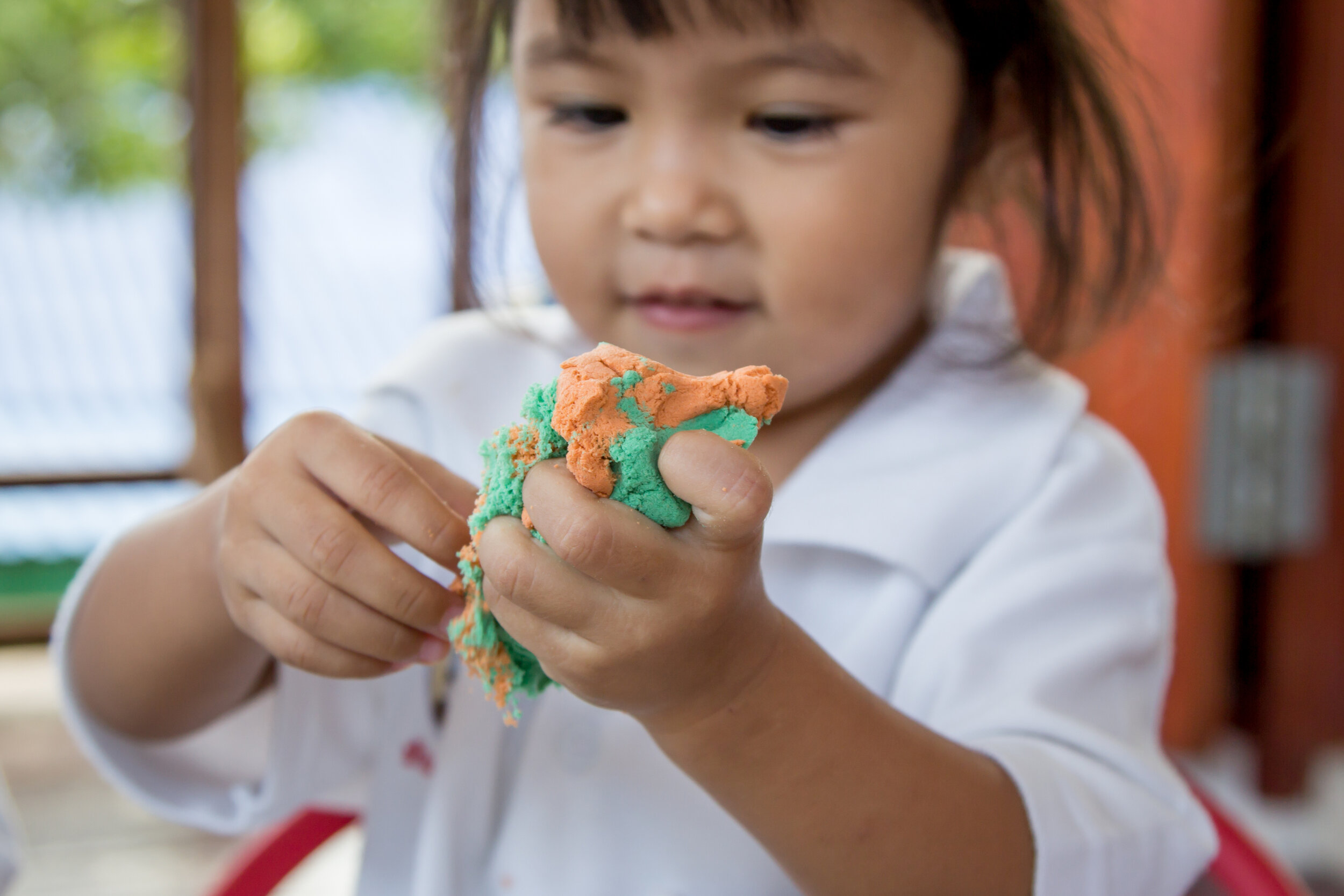Little hands: Learn why strengthening the muscles in your children's hands is important for their development
As parents, we often worry about whether we are doing all we can to make sure our children are ready for school. We talk, sing and read to them to build their vocabulary; we practice counting and learning shapes to prepare for math; and we explore the world of pretend play to foster their imagination and develop social skills.
There’s also another area of child development that is equally important and sometimes overlooked — strengthening children’s small muscles, also known as fine motor skills.
“Developing fine motor skills helps children become more independent in their everyday activities, like feeding and dressing themselves,” said Charlotte Frisco, Early Learning Communities manager at Oakland Family Services. “Strengthening these muscles also helps with preschool-related tasks, such as writing, coloring and cutting.”
Here are some ways you can help your children develop those small muscles:
Birth to 6 months
As an infant, your baby will hold your finger with the entire hand. This palmar grasp is a reflex and one of the first types of hand development your child will exhibit. Your baby’s hands will first resemble a fist but around 3 months you will start to notice your child’s hands open and be more relaxed. If your baby’s hands remain in a fist, try massaging the hands to help strengthen those muscles. By 6 months, your child will start to reach for objects like a rattle, glasses on your face, and even your hair! Try putting toys slightly out of reach and see if your baby will use muscles in his or her fingers to grab them.
6 months to 1 year
When children start to eat more solid foods, they will pick up bite-size pieces by using their index finger and thumb, known as a pincer grasp. This “pinching” motion strengthens the tiny muscles in their fingers and helps them self-feed. One way you can help your baby develop the pincer grasp is by having your child pick up cotton balls with the pincer grasp and drop them into a cup. It’s important to practice these types of fine motor activities with both hands so the muscles develop equally.
1 to 3 years
With supervision, playdough is a fun way to work on fine motor skills. Squeezing the playdough and poking it with a single finger works on developing the muscles in their fingers and hands. At this age, children learn by watching so have some fun modeling activities for your to imitate. Squeeze water out of sponge at bath time, stack blocks during playtime, or use your fingers to make circles in whip cream. You also can have your child color while laying on his or her belly, sitting at a table, or standing using an easel.
“Each position works on the muscles in different ways and strengthens those small muscles,” Frisco said.
If you are concerned about your child’s development or want to see if it is on track, try taking the Ages and Stages Questionnaire. To learn other ways you can help your child’s development, visit before3tosucceed.org.


